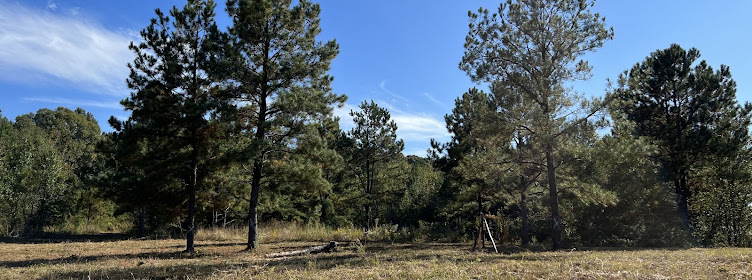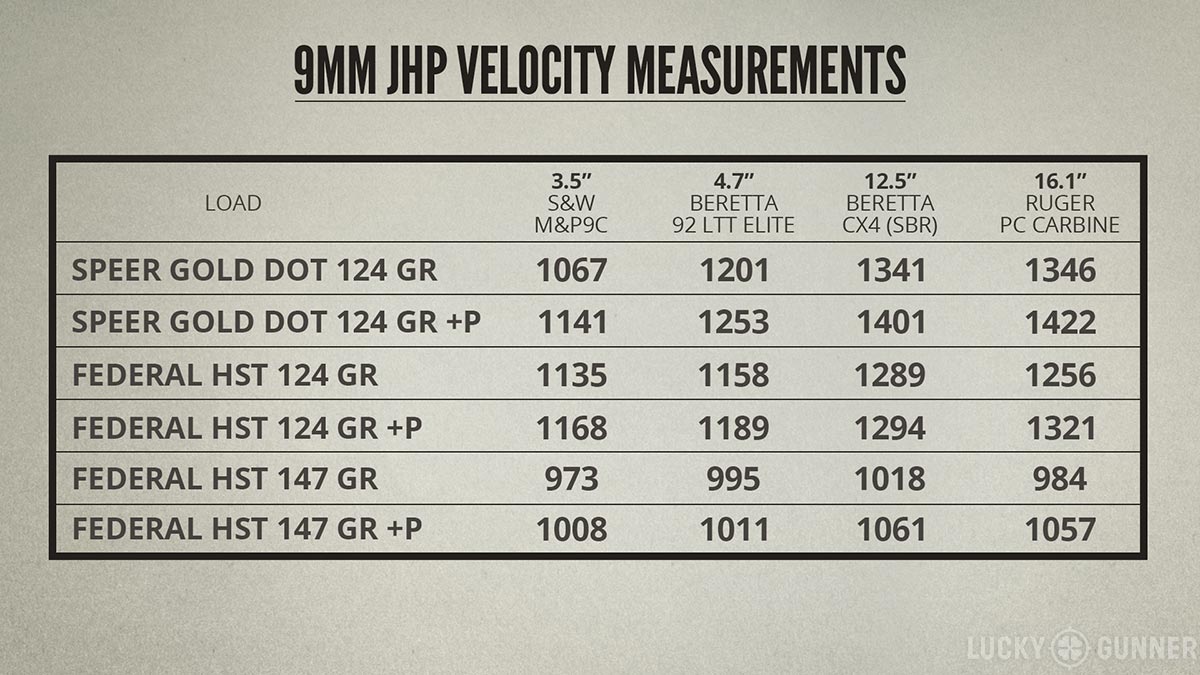2023's SHOT Show turned out to have some interesting stuff announced but the Henry Homesteader really took the cake for me. That's a statement that I have been very open about.
I was so interested in the rifle that it actually bumped my plans to build a new Marlin 336 hunting rifle when those are released by Ruger. Partly because the 336 Classic won't have a threaded barrel at the beginning that we've seen and it took the wind out of my wings, so to say.
The new Homesteader comes at a time perfectly for me. My wife and I have embarked on a new project to build a homestead of our own on 19 acres in Georgia. We're starting from partially open land and woods and are trying to clear the land and build a home. We want to raise cattle and chickens and have our own family. I have no idea how long it will take before we can build but I wished it was happening now.
My vison for the Homesteader is as advertised. A rifle that I can carry around as needed, something that the wife could use to bust larger varmints but also be loaded with ammunition that could be used in a defensive situation should something pop up. My intent is more for something we could have handy in the pantry or similar that the wife could access easy.
The first question I worked on answering was viability. Was this rifle something we could roll into that situation? What answers that question is ammunition. The internet has lots of data available and if you know what to look for you can probably find what you need.
We have an ample stock of Speer's Gold Dot 124 gr +P defensive ammunition. It works very well in my P365XL carry gun. I had no data on how the bullet runs in a rifle. Lucky Gunner has done much to provide data on ammunition choices that goes beyond the data the Ballistics By the Inch compiled a decade or more ago. Below is a chart of a selection of cartridges and the velocities from different barrels. We're interested in the Ruger PC Carbine and it's 16 inch barrel.
The +P variant in of the 124 gr loads from the the 16 inch barrel are showing 1422 feet per second from the Lucky Gunner testing. If we plug that information into the GunData.org calculator with a 50 yard zero and a scope 1.5 inches over bore, we see that the bullet is moving pretty fast and flat up to the 55 yard mark. The bullet is never .11 inch above or below during that flight. It does start to drop fast around the 75 yard mark. The bullet is still moving around 1155 fps according to the calculator.
At 100 yards the drop is pretty significant. We can tinker with the distance where the zero is at to give us a better battle zero. Zeroing for 15 yards gets you a secondary zero at 92 yards while still moving at 1112 fps but the bullet is high at 55 yards at 1.72 inches above point of aim. I don't know if that's the best choice for busting ground hogs and armadillos. 25 yards seems to give good options as well.
Looking around, Lucky Gunner did find that in ballistic gel, the 124 gr +P load did lose out on penetration compared to a handgun that the higher velocities. While that would be an issue, unless you're shooting the deer at sub-25 yards, the velocity tapers off pretty quickly as the bullet moves out. Please note, Lucky Gunner's test did find that even at short ranges, the bullet from a rifle barrel is still meeting the minimum penetration of 12 inches in gel at 14 inches. It's noteworthy that the both the Federal HST 147 gr and +P variant load penetrated to 17 inches from the 16 inch barrel. All of these tests would have occurred at short ranges. To properly test, you would need to put a block at 25 yards or so to see what would actually happen in a situation where you'd shoot a deer.
The calculator says that at 40 yards you'd see more like 1265 fps which is about 65 fps faster than what I get from my P365XL at the muzzle. I've taken a few deer at shorter ranges with the first deer I took on the farm at around 45 yards. At that distance, the penetration should be back up to the original 16 inch mark. It may actually be better to run the 147 gr rounds but I only have the 124 gr bullets in stock. The 147 gr rounds seem to taper off just a bit too quickly for what I like based on the calculator. I don't know what the minimum velocity for the 147 gr HST hollow point is but with a 25 yard zero at 1057 fps, the round looks like it could work out to 50 yards.
The 124 gr loads drop below 1100 fps around 98 yards and if I recall correctly, they should still open up just fine. I'm thinking, though, I would try to keep my shots under 75 yards. I would definitely keep my shots under 50 yards with the 147 grain bullets making the higher velocity 124 grain loads more versatile and flatter shooting further out.
Optics
For the sighting plane, the rifle comes with a front post and a rear aperture sight mounted to the barrel. The receiver is left available for whatever optic you chose. A red dot does immediately come to mind but I like the idea of running a small amount of magnification such as 2x or 3x for the more precise shots on varmints. The Leupold FX-II 2.5x scope is pretty nice as it's lightweight and at a great price but the diameter of the rear glass is kind of narrow and the reticle isn't illuminated. It's worked well on my Marlin 357 mag lever action. Mishaco, the blind YouTube gun guy, has a video of his comrade Jake with a PC Carbine and the FX-II. Jake seemed to make it work great at 100 yards. I like the idea of the FX-II for it's more traditional aesthetic and clear glass even if the glass diameter is a little small. You could run a 2-7x or something like an LPVO. Looking over the various options, the Leupold VX3-HD 1.5-5x does everything I want. It's got their Firedot illumination, low end magnification and the eye relief is generous. Sadly, that scope is about $700 and I tend to be on a budget. At $299, the FX-II tends to fit better in my budget.
I also tinkered with the idea of a 2x or 3x prism. The Ruger PC Carbine is laid out the same as the Homesteader so I did some research on if anyone had successfully utilized a prism scope. I did observe via Google, a few folks had used prism scopes such as the Vortex 3x, the Primary Arms 2x and Burris AR332. The Vortex unit has an eye relief of about 2.8 inches and the Burris AR332, also a 3x unit, has less eye relief at 2.5 inches. The PA GLx 2x is around 3.5 inches indicating it may be a better choice for a traditionally configured rifle. The PA optic has an illuminated, etched reticle and a long battery life per the advertisements. According to the PA website, the body weighs around 11 oz which is slightly heavier than the FX-II. I would happily trade a few ounces for an illuminated reticle. This is a homestead defense rifle first and foremost.
The PA GLx 2x does have a variant that has a 9mm calibrated ACSS reticle called the 9mm Gemini. Looking at the manual for the reticle, the chevron's peak should be zeroed for 50 yards with a 16 barrel. That puts the bottom of the chevron good for 100 yards. They say the second dot should be around 150 yards and the third dot for 200 yards. I really do think the Primary Arms GLx 2x 9mm Gemini would be a great choice. My only beef with the optic is the mounting system. These scopes are intended for picatinny rails on AR-15 based firearms. I would prefer to see a mount designed for the Homesteader that directly screws to the receiver but the way the scope is setup, all the screws are under the optic. The mount is then attached and tightened from the side. A long picatinny rail ruins the aesthetic in my opinion but it should be functional.
Until all the parts I want to try are available I set the rifle up with a temporary configuration.
First, I pulled the Burris Fast Fire 3 red dot off of my turkey shotgun. This works because I also have a 336 / 1895 mount for the FF3 that only uses two of the receiver's holes. I used this same setup on the Marlin 1894 for a while. I also borrowed a JMAC Customs flash hider off of an AR-9 that I haven't been using. I shimmed the device and got it timed just right. I added a leather sling off of another project to complete the early build to make the gun usable.
When I got the rifle home, I looked it over and everything did check out minus one very serious issue. The stock was cracked where the receiver and stock join. I had missed this when I checked it at the gun shop who transferred it to me. I didn't look very hard.
I don't know if it happened during shipping but I'm struggling with idea that it left Henry this way. It doesn't feel loose though, which is odd, as if the assembler cranked down on the stock but I feel like QC would have caught this. Either way, Henry made it right as the stock showed up within a few days.
Future Setup







No comments:
Post a Comment